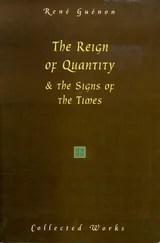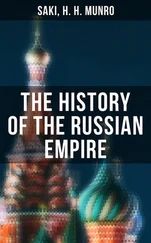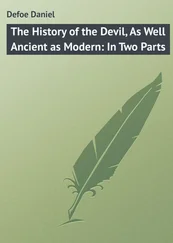[36] In 1258, they presented a variety of petitions to the king, in relation to his own personal expenditure, as well as that of his courtiers; requiring him to diminish the charges of his table, attire, etc., and, bluntly, to "bring his appetite within a more reasonable compass;" to all which he readily gave his assent. (Sempere y Guarinos, Historia del Luxo, y de las Leyes Suntuarias de España, (Madrid, 1788,) tom. i. pp. 91, 92.) The English reader is reminded of a very different result, which attended a similar interposition of the commons in the time of Richard II., more than a century later.
[37] Marina claims also the right of the cortes to be consulted on questions of war and peace, of which he adduces several precedents. (Teoría, part. 2, cap. 19, 20.) Their interference in what is so generally held the peculiar province of the executive, was perhaps encouraged by the sovereign, with the politic design of relieving himself of the responsibility of measures whose success must depend eventually on their support. Hallam notices a similar policy of the crown, under Edward III., in his view of the English constitution during the Middle Ages. View of the State of Europe during the Middle Ages, (London, 1819,) vol. iii. chap. 8.
[38] The recognition of the title of the heir apparent, by a cortes convoked for that purpose, has continued to be observed in Castile down to the present time. Práctica y Estilo, p. 229.
[39] For the preceding notice of the cortes, see Marina, Teoría, part. 2, cap. 13, 19, 20, 21, 31, 35, 37, 38.
[40] So at least they are styled by Marina. See his account of these institutions; (Teoría, part. 2, cap. 39;) also Salazar de Mendoza, (Monarquía, lib. 3, cap. 15, 16,) and Sempere, (Histoire des Cortès, chap. 12, 13.) One hundred cities associated in the Hermandad of 1315. In that of 1295, were thirty-four. The knights and inferior nobility frequently made part of the association. The articles of confederation are given by Risco, in his continuation of Florez. (España Sagrada, (Madrid, 1775- 1826,) tom. xxxvi. p. 162.) In one of these articles it is declared, that, if any noble shall deprive a member of the association of his property, and refuse restitution, his house shall be razed to the ground. (Art. 4.) In another, that if any one, by command of the king, shall attempt to collect an unlawful tax, he shall be put to death on the spot. Art. 9.
[41] See Sempere, Historia del Luxo, tom. i. p. 97.—Masdeu, Hist. Crítica, tom. xiii. nos. 90, 91.—Gold and silver, curiously wrought into plate, were exported in considerable quantities from Spain, the tenth and eleventh centuries. They were much used in the churches. The tiara of the pope was so richly encrusted with the precious metals, says Masdeu, as to receive the name of Spanodista . The familiar use of these metals as ornaments of dress is attested by the ancient poem of the "Cid." See, in particular, the costume of the Campeador; vv. 3099 et seq.
[42] Zuñiga, Annales Eclesiasticos y Seculares de Sevilla, (Madrid, 1677,) pp. 74, 75.—Sempere, Historia del Luxo, tom. i. p. 80.
[43] The historian of Seville describes that city, about the middle of the fifteenth century, as possessing a flourishing commerce and a degree of opulence unexampled since the conquest. It was filled with an active population, employed in the various mechanic arts. Its domestic fabrics, as well as natural products, of oil, wine, wool, etc., supplied a trade with Prance, Flanders, Italy, and England. (Zuñiga, Annales de Sevilla, p. 341.—See also Sempere, Historia del Luxo, p. 81, nota 2.) The ports of Biscay, which belonged to the Castilian crown, were the marts of an extensive trade with the north, during the thirteenth and fourteenth centuries. This province entered into repeated treaties of commerce with France and England; and her factories were established at Bruges, the great emporium of commercial intercourse during this period between the north and south, before those of any other people in Europe, except the Germans. (Diccionario Geográfico-Histórico de España, por la Real Academia de la Historia, (Madrid, 1802,) tom. i. p. 333.)
The institution of the mesta is referred, says Laborde, (Itinéraire Descriptif de l'Espagne, (Paris, 1827–1830,) tom. iv. p. 47,) to the middle of the fourteenth century, when the great plague, which devastated the country so sorely, left large depopulated tracts open to pasturage. This popular opinion is erroneous, since it engaged the attention of government, and became the subject of legislation as anciently as 1273, under Alfonso the Wise. (See Asso y Manuel, Instituciones, Introd. p. 56.) Capmany, however, dates the great improvement in the breed of Spanish sheep from the year 1394, when Catharine of Lancaster brought with her, as a part of her dowry to the heir apparent of Castile, a flock of English merinos, distinguished, at that time, above those of every other country, for the beauty and delicacy of their fleece. (Memorias Históricas sobre la Marina, Comercio, y Artes de Barcelona, (Madrid, 1779–1792,) tom. iii. pp. 336, 337.) This acute writer, after a very careful examination of the subject, differing from those already quoted, considers the raw material for manufacture, and the natural productions of the soil, to have constituted almost the only articles of export from Spain, until after the fifteenth century. (Ibid., p. 338.) We will remark, in conclusion of this desultory note, that the term merinos is derived, by Conde, from moedinos , signifying "wandering;" the name of an Arabian tribe, who shifted their place of residence with the season. (Hist. de los Arabes en España, tom. i. p. 488, nota.) The derivation might startle any but a professed etymologist.
[44] See the original acts, cited by Sempere. (Historia del Luxo, passim.) The archpriest of Hita indulges his vein freely against the luxury, cupidity, and other fashionable sins of his age. (See Sanchez, Poesias Castellanas, tom. iv.)—The influence of Mammon appears to have been as supreme in the fourteenth century as at any later period.
"Sea un ome nescio, et rudo labrador,
Los dineros le fasen fidalgo e sabidor,
Quanto mas algo tiene, tanto es mas de valor,
El que no ba dineros, non es de si señor."
Vv. 465 et seq.
[45] Marina, Ensayo, nos. 199, 297.—Zuñiga, Annales de Sevilla, p. 341.
[46] Marina, Teoría, part. 2, cap. 28.—Mariana, Hist. de España, lib. 18, cap. 15.—The admission of citizens into the king's council would have formed a most important epoch for the commons, had they not soon been replaced by jurisconsults, whose studies and sentiments inclined them less to the popular side than to that of prerogative.
[47] Ibid., lib. 18, cap. 17.
[48] Castilla . See Salazar de Mendoza, Monarquía, tom. i. p. 108.— Livy mentions the great number of these towers in Spain in his day. "Multas et locis altis positas turres Hispania habet." (Lib. 22, cap. 19.)—A castle was emblazoned on the escutcheon of Castile, as far back as the reign of Urraca, in the beginning of the twelfth century, according to Salazar de Mendoza, (Monarquía, tom. i. p. 142,) although Garibay discerns no vestige of these arms on any instrument of a much older date than the beginning of the thirteenth century. Compendio, lib. 12, cap. 32.
[49]
"Hizo guerra a los Moros,
Ganando sus fortalezas
Y sus villas.
Y en las lides que Venció
Caballeros y Caballos
Se perdiéron,
Y en este ofloio ganó
Las rentas y los vasallos
Que le dieron." Coplas de Manrique, copla 31.
[50] Asso and Manuel derive the introduction of fiefs into Castile, from Catalonia. (Instituciones, p. 96.) The twenty-sixth title, part. 4, of Alfonso X.'s code, (Siete Partidas,) treats exclusively of them. (De los Feudos.) The laws 2, 4, 5, are expressly devoted to a brief exposition of the nature of a fief, the ceremonies of investiture, and the reciprocal obligations of lord and vassal. Those of the latter consisted in keeping his lord's counsel, maintaining his interest, and aiding him in war. With all this, there are anomalies in this code, and still more in the usages of the country, not easy to explain on the usual principles of the feudal relation; a circumstance, which has led to much discrepancy of opinion on the subject, in political writers, as well as to some inconsistency. Sempere, who entertains no doubt of the establishment of feudal institutions in Castile, tells us, that "the nobles, after the Conquest, succeeded in obtaining an exemption from military service,"—one of the most conspicuous and essential of all the feudal relations. Histoire des Cortès, pp. 30, 72, 249.
Читать дальше












